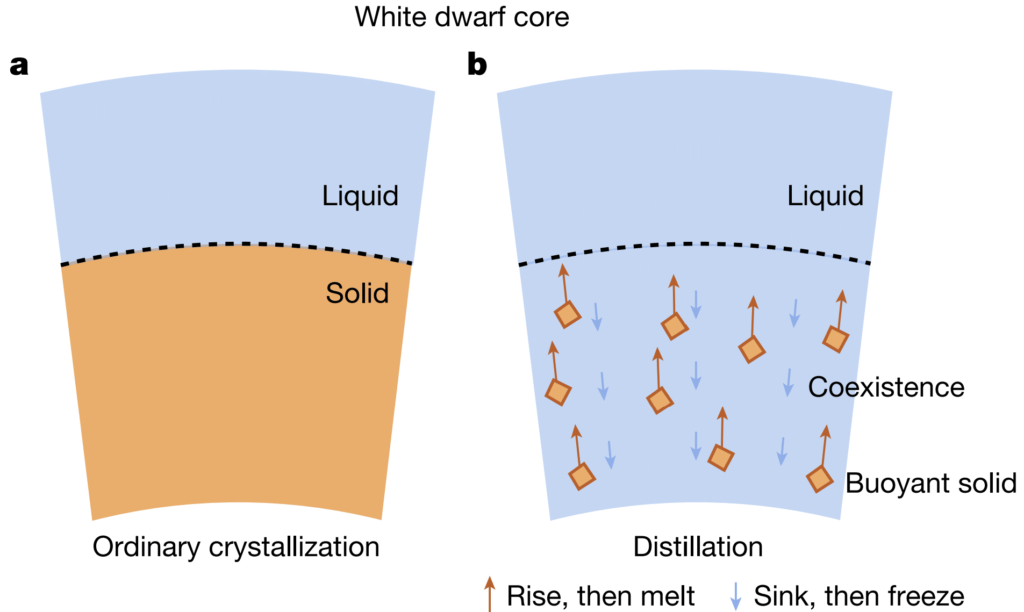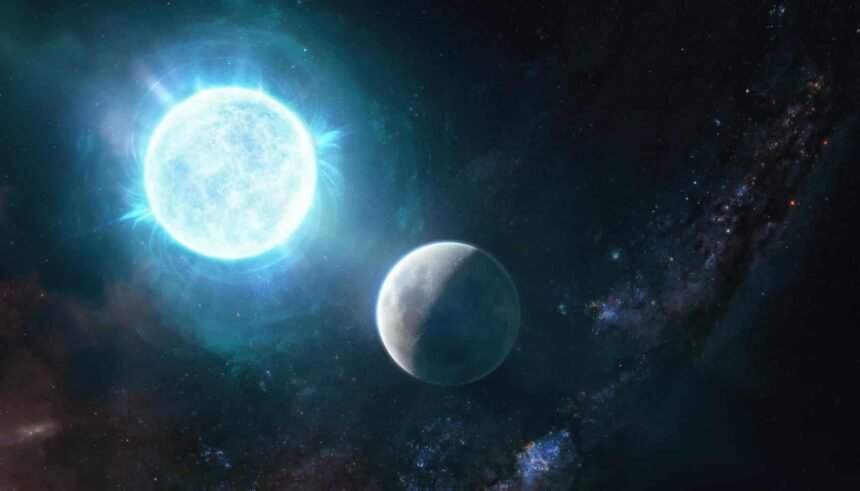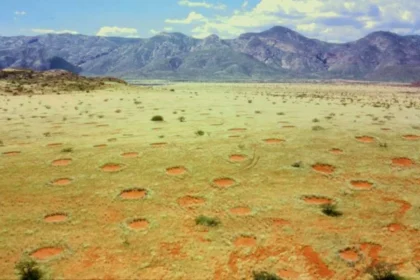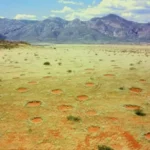White dwarfs were not as “dead” as is commonly believed. Scientists have explained why some of these stars stop “solidifying” and where they get the energy to continue to shine evenly for billions of years.
“In 2019, scientists used data from the Gaia survey to create a Hertzsprung-Russell diagram, showing how stars’ brightness relates to their type and other factors. They found something interesting: a group of stars called the Q-branch. This part of the diagram should have old, cooling white dwarfs. But some of the stars in the Q-branch are much older than expected, around eight billion years old. Surprisingly, they haven’t cooled down yet. Scientists are now figuring out how these stars have managed to stay “alive” for so long.”
In the standard model of white dwarf cooling, its crystallization occurs from the inside out. A “dead” star, having spent its thermonuclear resource, begins to cool, and the plasma in its depths crystallizes. This releases a noticeable amount of heat and energy. They, of course, slow down the cooling process but cannot stop it for billions of years.
According to astrophysicists’ calculations, the core of most massive white dwarfs should consist of oxygen and neon. Their cooling proceeds according to the standard scenario. Yet some binary star mergers should form massive white dwarfs with a carbon-oxygen core and large amounts of neutron-rich impurities—for example, neon-22.
As the authors of a new study published in Nature found out, the solidification process turns into distillation with this composition.
Floating crystals form in massive white dwarfs with “impurities.” They move “up” while the heavier, neon-22-rich liquid moves down. The authors estimate that neon-22 saturation increases from three percent to 30 percent of the mass. The authors used neon-22 as a “representative” of all neutron-rich molecules.
As a result, the mass of the core increases (density increases by about eight percent), and the white dwarf shrinks slightly (radius decreases by one percent), due to which additional energy is released. It is this that slows down cooling. According to calculations, depending on the mass of the white dwarf, it stops for 7-13 billion years. The greater the mass, the shorter the “stop” because the process proceeds faster and energy is released faster.

The authors of the work simulated the evolution of massive white dwarfs, of which the majority were “ordinary,” and from five to nine percent had a composition suitable for forming buoyant crystals. The results matched the position and width of the Q-branch in the Gaia data for the first time.
“This discovery will require a revision not only of astronomy textbooks but also of methods for estimating the ages of stellar populations,” said Simon Blouin, co-author of the new paper from the University of Victoria (Canada).
It turns out that over billions of years, such white dwarfs have glowed the same way as “normal” ones. This means they may be much older than they look. But it is by the age of stars that scientists determine the age of clusters and reconstruct their formation histories. Among them is our Milky Way galaxy.
The population of such white dwarfs is still not that large. Therefore, you should expect a manageable revaluation. Of course, astronomers will now take their existence into account.








